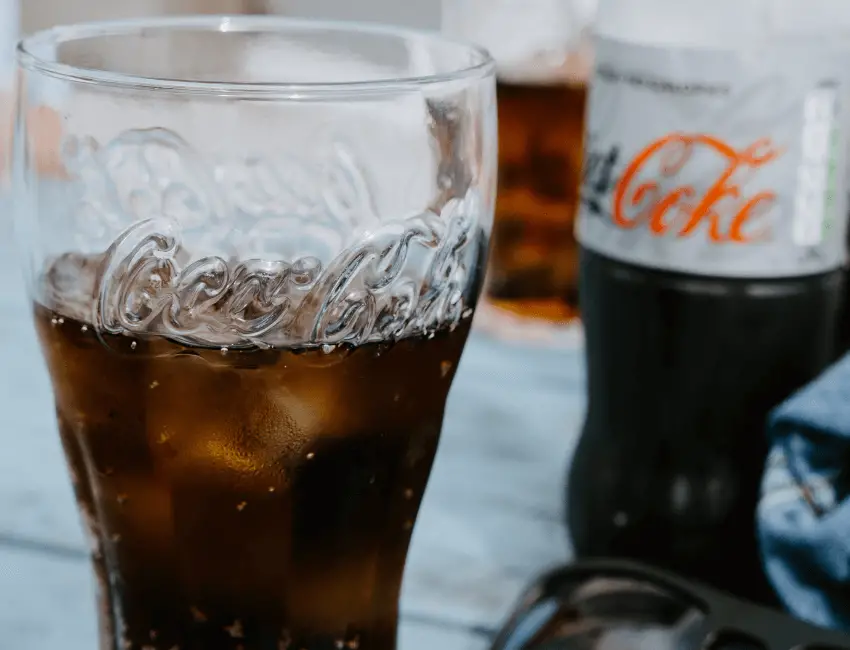Sodas are notorious for containing color additives such as red dye 40 and yellow 5. But, does Diet Coke have synthetic or natural sourced coloring in it? Here is what you need to know about the coloring in Diet Coke…
Diet Coke & Red Dye
The Coco-Cola Company is required by FDA regulations to list red and other dyes in the ingredients found on the product label or packaging. The most common red dye used in sodas is Red #40. It is found in soft drinks like Orange Fanta, Cherry 7Up, and Mtn Dew Code Red.
Diet Coke does not contain red dye. Rather, it gets its dark brown color from an ingredient called caramel color.
Caramel color is a color additive that has been used for over 150 years. It is commonly made by heating a carbohydrate such as dextrose, molasses, or invert sugar with a food-grade acid like citric or acetic acid to promote caramelization. A dark-brown liquid or solid is formed after the heating process which is used for coloring foods according to standards.
Here are the list of ingredients for Diet Coke: Carbonated Water, Caramel Color, Aspartame, Phosphoric Acid, Potassium Benzoate (To Protect Taste), Natural Flavors, Citric Acid, Caffeine.
Keep in mind that most colas are colored with caramel color including Coca-Cola, Pepsi, and RC Cola.
Is Caramel Color Safe?
Similar to red dye 40 and other synthtic food dyes, caramel color is not free from its own controversies. People still have their concerns about this color additive despite it being approved for use in foods and beverages by the FDA for many years.
The often cited problem with caramel color is a chemical compound called 4-methylimidazole (4-MEI) that is sometimes produced during the heating process while the additive is being manufactured. Studies have found that 4-MEI increased the tumor rate in mice and caused developmental and reproductive issues in rats. However, these studies gave rodents levels of 4-MEI that greatly exceeded what people would consume in a day. In other words, the believe is that humans would not be able to consume the quantity needed for adverse health issues to occur from caramel color.
Be aware that caramel color is not an essential nutrient for the body and can be eliminate from the diet. If you have concern about consuming caramel color, eliminate it from your diet by reading labels and avoiding foods/beverages containing it.
Sources:
Anderson, E., & Li, J. (2022, January 21). 101 series – food dye. 101 Series – Food Dye. Retrieved January 23, 2023, from https://www.canr.msu.edu/news/101-series-food-dye
https://www.fda.gov/food/food-additives-petitions/questions-answers-about-4-mei#:~:text=No.,color%20added%E2%80%9D%20unless%20otherwise%20indicated.

